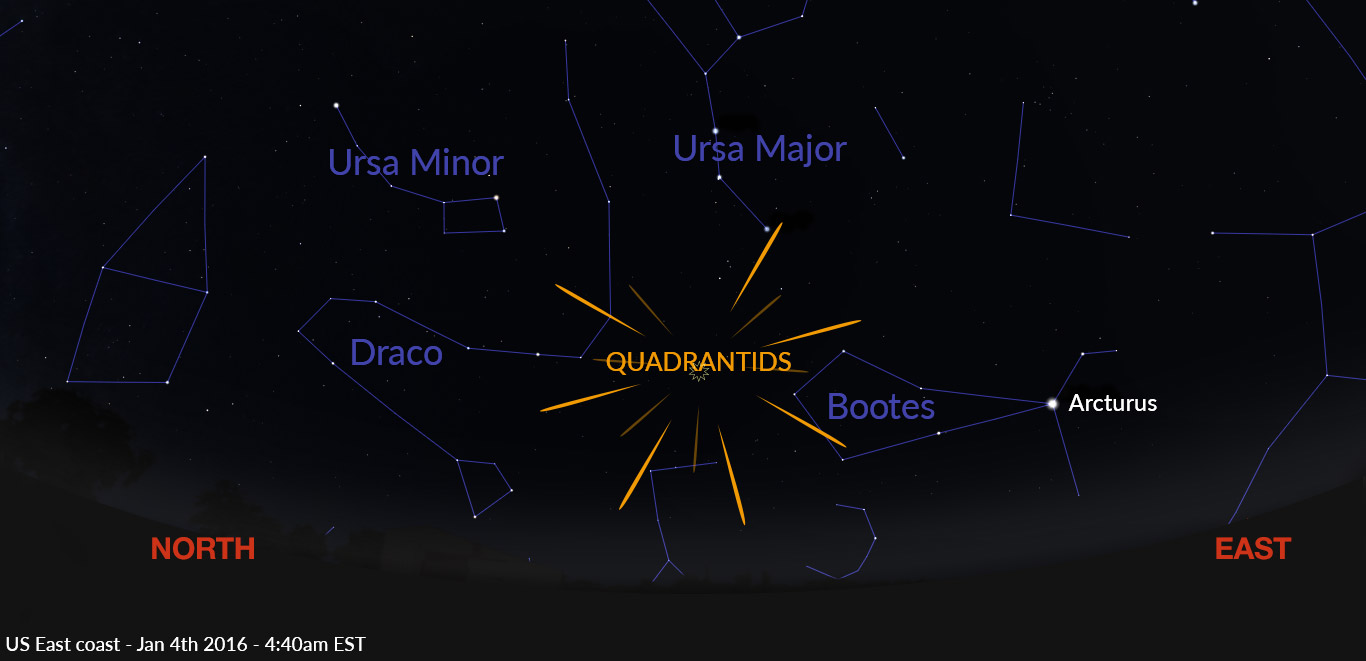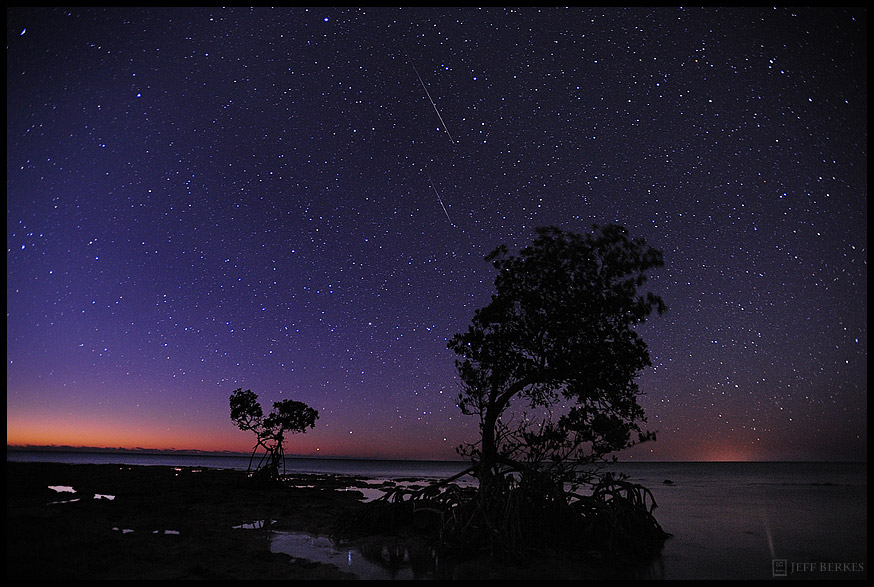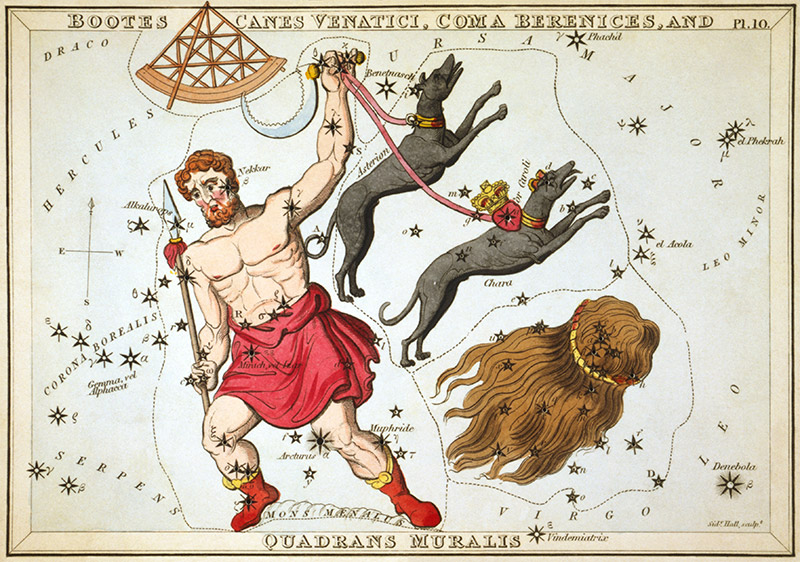
Ever wonder why the moon is mentioned so often in reports on this website? The reason is simple; the visibility of a meteor shower depends greatly on the phase of the moon. An observer will see many more meteors in a moonless sky than one with a full moon. Contrary to popular belief, most of the meteors we see in the sky are on the faint side, equivalent to 3rd or 4th magnitude stars. These meteors are easily obscured by moonlight, especially if the sky is hazy. While successful meteor watching sessions can be carried out with a moon in the sky, you will see more activity on moonless nights or when the phase is thin.
As for the Quadrantid meteor shower of 2016, this shower is predicted to peak on Monday morning January 4th over North America and the western Atlantic rigion. On that morning the 30% illuminated moon will rise at approximately 0200 (2am) local standard time for most observers in the northern hemisphere. This timing will vary according to your exact location. 30% does not sound like much but if your face toward the moon during your observations it will be a nuisance and will cause you to miss some fainter meteors. If the moon is above the horizon during your Quadrantid observations I would advise you to face toward the northern half of the sky with the moon at your back.
This shower has a very sharp peak that is predicted to occur near 4am AST, 3am EST, 2am CST, 1am MST, and midnight PST. The moon will be above the horizon for the eastern half of North America. While the western half may have darker skies, the radiant (the area of the sky where Quadrantid meteors come from) will be located lower in the sky. This means that there will be less activity. So despite the moonlight, the east half of North America will be favored for this display if it occurs at the predicted time.
As you see from the chart above, the Quadrantid radiant is located in a blank part of the sky. The nearest recognizable star pattern is the Big Dipper, which is part of the constellation Ursa Major. Quadrantid meteors can be seen in all parts of the sky but they will all trace back to this radiant area. These meteors possess medium speeds and the brighter members can produce persistent trains which linger after the meteor itself has vanished. Not all meteors you see on Monday morning will be Quadrantids. There are minor showers and random meteors also active which should add at least 10 meteors per hour to your totals.
A good viewing strategy would be to watch for at least an hour centered on the times above. This prediction is based on returns of this shower for the last 20 years but it may be off by an hour or two. If the maximum occurs earlier then activity will be far less for everyone in North America. If it is late then the entire continent has the opportunity to see an excellent display. This shower has the potential to produce in excess of 100 meteors per hour if viewed from rural locations. Unfortunately these rates are rare and we usually end up seeing a peak of around 25 Quadrantids per hour. If you view from the eastern half of North American and your rates are low at the predicted time then try to stay out longer as the activity may still be on the increase. So if your skies are clear on Monday morning then bundle up and and try your luck at seeing some celestial fireworks!

I should also mention that there is another prediction for an earlier peak that is favorable for European observers. So before you head out you may wish to check the internet to see if strong rates were seen over Europe. If the peak occurs over Europe then there will be little activity left for North American observers.
History
When the first report of the Quadrantids came public (around 1825), the radiant appeared in the constellation Quadrans Muralis, located between the constellations Draco and Boötes. In 1922, the International Astronomical Union formed a list of modern constellations and elected not to include Quadrans Muralis. As the name “Quandrantids” remains, some astronomers suggest the meteor shower could new be called the Boötids,since the radiant falls in the constellation Boötes. However, there is already a meteor shower by that name, which occurs in late June in the Northern Hemisphere.

Parent Body
The Quadrantid meteor shower influx is sharply peaked: six hours before and after maximum, these meteors appear at only half of their highest rates. This means that the stream of particles is a narrow one, possibly derived relatively recently from a small comet. The parent body of the Quadrantids was tentatively identified in 2003 by Peter Jenniskens as the minor planet 2003 EH1, which in turn may be related to the comet C/1490 Y1 that was observed by Chinese, Japanese and Korean astronomers some 500 years ago.
 American Meteor Society
American Meteor Society
Thanks for all your great reports.
How would I find the websites that would show if strong rates occur earlier than predicted in Europe?
Thanks
Brett and All,
The International Meteor Organization (www.imo.net) use to keep a running ZHR on major showers but this has been lacking for the past few months. You might also try reading the postings on the yahoo group known as “Meteorobs”. Many experienced observers post their data there soon after their sessions. Another possible site is http://www.spaceweather.com
I hope this helps!
Robert Lunsford